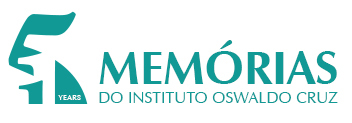Book review
Manual para el Control de las Enfermedades Transmissibles
Vol. 93(4): 559
Author: Abram S Benenson
Publisher: Abram S Benenson, 16a ed., Washington, D.C. 1997, 569 pp. - (OPS, Publicación Científica, No. 564), price: US$ 20.00
ISBN 92 75 31564 7
The Manual para el Control de las Enfer-medades Transmissibles, 16th edition, in Spanish, edited by Abram S Benenson, is a translation of the Control of Communicable Diseases Manual, an extraordinary publication from the American Public Health Association, produced with the direct participation of World Health Organization and Pan-American Health Organization. Its applicability can be assured by the concise presentation, which covers a wide range of issues with respect to transmissible diseases in the world. Special attention is given to new emerging diseases like Ebola, AIDS and Hanta virus. The book is very nicely presented, well organized, easy to read, and to consult. The diseases are classified by the "International Classification of Diseases" according to the last revision (the 10th) in order to avoid misunderstandings by health care professionals from different countries. The reader finds in all chapters uniform information covering a brief clinical picture of the disease and practical data about the ethiologic agent, for example the nature of the infective agent, its distribution, mechanisms of transmission, advice on quarantine, control and prophylactic therapeutic measures. The scope of these data qualify the health professional to solve the common problems of dealing with transmissible diseases: how to care for the sick people and how to protect the community. Nevertheless, as it is not a therapeutic guide, it sometimes lacks sufficient information about treatment schedules. On the other hand, tuberculosis, today an emergent disease in both industrialized and developing countries, is given nine pages of extensive and detailed information. There are other peculiar and practical points to be mentioned; these include the provision of the CDC phone number to help physicians in the United States to obtain uncommon drugs for exotic diseases or new drugs which are still being tested, and a glossary detailing some very important definitions. Taking into account the richness of information it contains, we can say that, instead of being a simple manual, this small book is in fact a true textbook about the control of infectious diseases in pocket format. As such it should be recommended for all personal involved with public health and control of transmissible diseases.
Marise S Mattos
Hospital Evandro Chagas, Instituto Oswaldo Cruz, Av. Brasil 4365, 21045-900 Rio de Janeiro, RJ, Brasil
E-mail: mmattos@dcc001.cict.fiocruz.br



